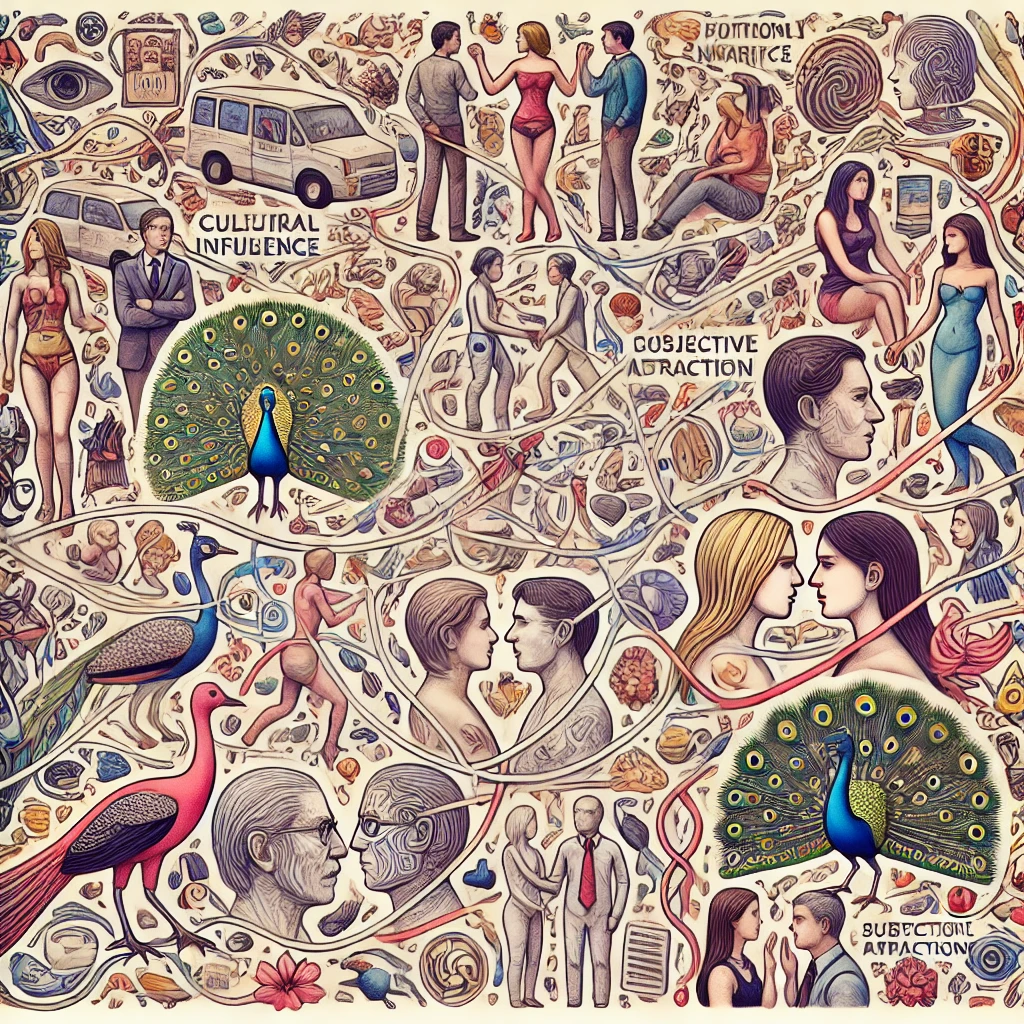
Physical attraction has long been debated, with some viewing it as a superficial aspect of human relationships and others considering it a fundamental, biologically ingrained trait. By examining human behavior and the animal kingdom, we can better understand whether physical attraction is inherently shallow or an essential part of natural selection and survival.
Physical Attraction in the Animal Kingdom
Physical traits often play a crucial role in attracting mates in the animal world. Take peacocks, for example. Male peacocks display their vibrant, colorful plumage to attract females. The more impressive the display, the higher the chances of attracting a mate. This behavior is not unique to peacocks; many species rely on physical attributes to signal health, vitality, and genetic fitness to potential mates.
Similarly, in Birds of Paradise, males perform elaborate dances and show off their striking feathers to win the favor of females. These displays are deeply rooted in evolutionary biology, where outward appearance is a proxy for genetic quality and reproductive success.
Human Attraction: Nature vs. Nurture
Like many animals, humans are influenced by physical traits when it comes to attraction. From an evolutionary perspective, certain physical attributes may signal health and fertility. For instance, symmetrical faces, clear skin, and certain body proportions are often attractive because they indicate good health and strong genes.
However, human attraction is more complex, influenced by both biological and cultural factors. While biology may predispose us to find certain traits appealing, culture and personal experiences also play significant roles. The saying “beauty is in the eye of the beholder” underscores the subjective nature of attraction. What one person finds attractive, another may not, highlighting the diverse range of human preferences.
The Role of Evolution
Evolutionary psychology suggests that physical attraction is not inherently shallow but a deeply ingrained mechanism for ensuring reproductive success. Traits perceived as attractive often correlate with good health and fertility, which are crucial for the continuation of the species. This biological predisposition explains why certain physical attributes are universally attractive across cultures and societies.
For example, research shows that features such as clear skin, bright eyes, and certain body shapes are consistently rated as attractive. These features may indicate good health and reproductive potential, making them desirable from an evolutionary standpoint.
Cultural and Personal Influences
While biology provides a foundation for physical attraction, cultural norms and personal experiences significantly shape our preferences. Different cultures have varying beauty standards, and what is considered attractive in one culture may not be in another. Additionally, personal experiences and relationships can influence what individuals find attractive. Over time, people may develop preferences based on positive interactions and emotional connections, further complicating the notion of physical attraction.
Beauty and Subjectivity
The diversity of human attraction supports the idea that beauty is subjective. People are attracted to various physical appearances, influenced by personal tastes, cultural backgrounds, and individual experiences. This diversity challenges the notion that physical attraction is purely superficial. Instead, it suggests that while certain traits may be universally appealing for evolutionary reasons, individual preferences are crucial in shaping what we find attractive.
Physical attraction is a complex interplay of biological and cultural factors. While certain physical traits may be universally appealing due to their association with health and fertility, individual and cultural differences highlight the subjective nature of beauty. Therefore, physical attraction is not inherently shallow but rather a multifaceted aspect of human relationships rooted in our evolutionary past and personal experiences. Understanding this complexity allows us to appreciate the diverse ways people experience and express attraction.
References
- Evolutionary Psychology Journal. “Physical Attractiveness and Reproductive Success.”
- Cultural Anthropology Review. “Beauty Standards Across Cultures.”
- Psychological Science. “The Subjectivity of Physical Attraction and Individual Preferences.